Static vs. Dynamic Websites: Which One is Right for You?
|
Getting your Trinity Audio player ready...
|
In today’s digital-first world, building a website is one of the first steps toward establishing your online presence – whether you’re a freelancer, a small business owner, or an organization looking to scale. One of the biggest decisions you’ll face early on is choosing between a static and a dynamic website.
Both have their pros and cons, and understanding the difference is crucial for picking the right solution for your specific needs. As a web developer, I’ve worked on both types, and in this blog post, I’ll break it down in the simplest way possible to help you decide what’s best for your website.
Table of Contents
ToggleWhat is a Static Website?
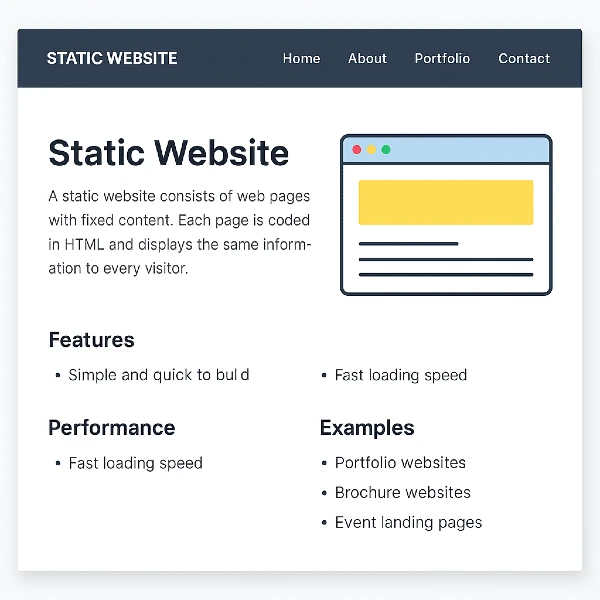
A static website consists of fixed content written in HTML, CSS, and sometimes JavaScript. In this setup, every page exists as an individual HTML file, and the server delivers it directly when requested by a user.
Features of Static Websites:
- Simple and quick to build
- Fast loading speed
- Lower hosting cost
- Can be effortlessly hosted on platforms such as GitHub Pages or Netlify.
When You Visit a Static Website:
You’re essentially downloading a pre-built webpage that looks the same for every visitor unless JavaScript adds some client-side interactivity.
Don’t Miss: SERP Features Optimization Strategies to Increase Click-Through Rates
Examples:
- Portfolio websites
- Brochure websites
- Event landing pages
- Basic blogs
What is a Dynamic Website?
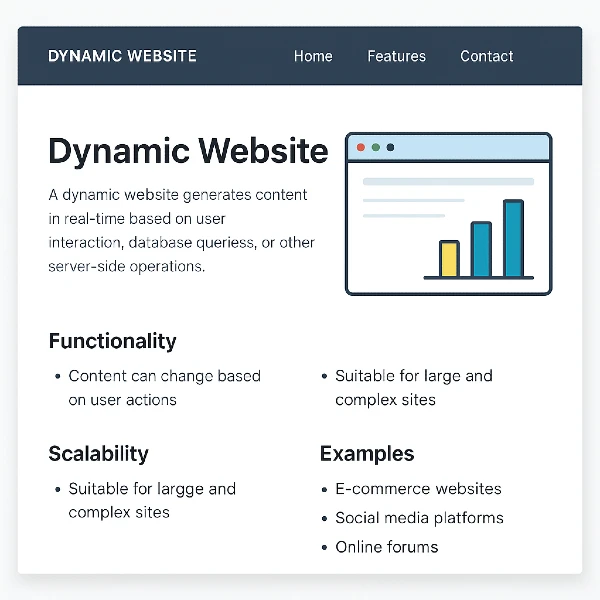
Dynamic websites create content in real-time using backend technologies such as PHP, Python, Ruby, or Node.js, often working alongside databases like MySQL or MongoDB. Pages are generated in real-time based on user interaction or data fetched from a database.
Features of Dynamic Websites:
- Content can change based on user actions
- Better scalability for larger websites
- Can have user logins, dashboards, forms, and databases
- Often built with CMS like WordPress or platforms like Django, Laravel, or Express.js
When You Visit a Dynamic Website:
The server processes your request, queries the database, and builds the webpage dynamically before sending it to your browser.
Examples:
- E-commerce websites
- Social media platforms
- Online learning portals
- Content-rich blogs with frequent updates
Key Differences Between Static and Dynamic Websites
| Feature | Static Website | Dynamic Website |
|---|---|---|
| Content | Fixed | Changes based on user/data |
| Performance | Very fast (no server-side processing) | Slightly slower (depends on server logic) |
| Cost | Lower development and hosting costs | Higher due to complexity |
| Ease of Development | Simple (basic HTML/CSS/JS) | Complex (needs backend & database) |
| Security | More secure (no server-side code) | Needs robust security measures |
| User Interaction | Limited | Advanced features like login, forms, etc. |
| SEO | Better control (manual optimisation) | Requires optimisation and plugins |
Pros and Cons of Static & Dynamic Websites
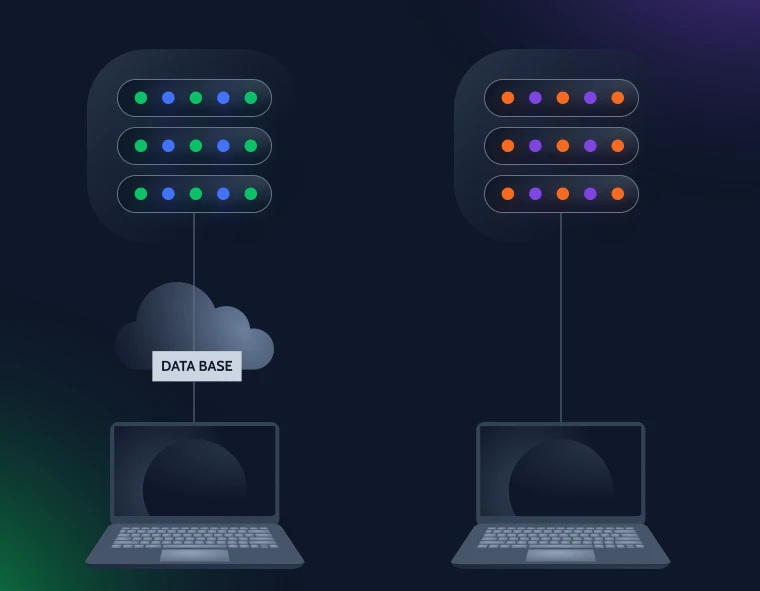
Pros of Static Websites
- Blazing fast load times
- Cheaper hosting (can even be free)
- Simple setup for non-tech users using website builders
- Easier to secure (no database to hack)
Cons of Static Websites
- Harder to update frequently
- Not suitable for websites with large or personalized content
- No real-time user interaction (like login or comments)
Pros of Dynamic Websites
- Easier to manage large amounts of data/content
- Supports interactivity (user logins, shopping carts, etc.)
- Great for businesses that plan to scale
- CMS (like WordPress) makes updates easy for non-tech users
Cons of Dynamic Websites
- Slower performance compared to static
- Requires more server resources
- Security risks (due to backend and database vulnerabilities)
- Higher development and maintenance cost
Use Cases: Which One Should You Choose?
Let’s break this down further based on your requirements:
1. For Freelancers or Portfolio Sites
Go static. You don’t need complex features. A fast-loading, stylish HTML portfolio can leave a lasting impact on visitors.
2. For Small Businesses or Local Shops
If you only need to display services, location, and contact info, static is enough. But if you want features like online appointment booking or a customer dashboard, go dynamic.
3. For E-commerce or Product-Based Sites
Go dynamic. You need a database to handle products, customers, carts, and payments. Platforms such as Shopify, WooCommerce on WordPress, or even fully customized solutions work excellently for online stores.
4. For Blogs
- If it’s a small blog with minimal updates, use Static (using tools like Jekyll or Hugo).
- For large, multi-author blogs: Dynamic (WordPress or Ghost).
5. For Startups & SaaS Platforms
Go dynamic. You’ll need user registration, dashboards, data processing, etc., which a static site can’t handle efficiently.
Don’t Miss: The Importance of Website Security for Small Businesses
Modern Middle Ground: Static Site Generators & Headless CMS
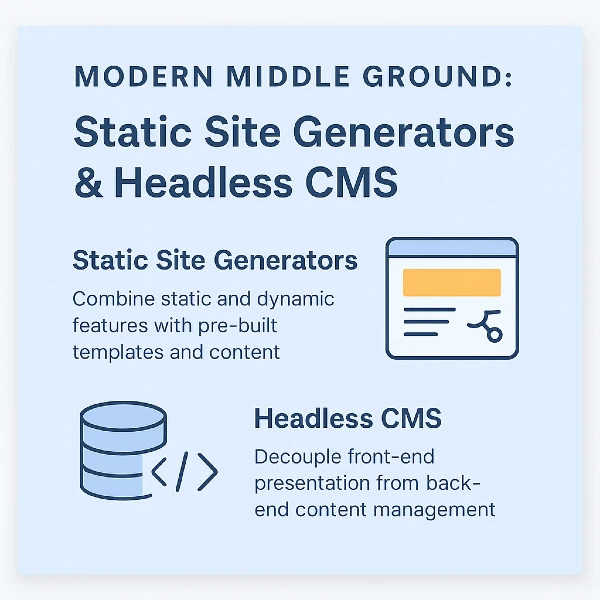
Thanks to modern development tools, the line between static and dynamic has blurred. You can now build hybrid websites:
Static Site Generators like:
- Jekyll
- Hugo
- Gatsby (React-based)
- js (can be static or dynamic)
These tools generate static HTML files from templates, often powered by APIs or markdown files.
Headless CMS:
Instead of using a traditional CMS like WordPress (where frontend and backend are tied), a Headless CMS lets you use any frontend while managing content from a backend interface.
Examples:
- Strapi
- Contentful
- Sanity
It merges the rapid loading of static pages with the adaptability of dynamic features.
Fifth Shield
Fifth Shield stands out as a leading website development company in Delhi, delivering customized web design and development solutions aligned with your business objectives. We develop websites that are mobile-friendly, SEO-compliant, and visually striking to enhance performance and engage users.
From static websites to dynamic portals and full-fledged e-commerce platforms, our skilled team delivers a smooth and efficient digital experience. From concept to launch, we provide end-to-end web solutions with reliability, speed, and creativity. Choose Fifth Shield for unmatched quality and professionalism in web development.
Wrapping Up
Deciding between a static and a dynamic website comes down to your objectives, budget constraints, and technical needs. If you’re looking for a simple, fast-loading, and cost-effective solution for a small website with limited updates, a static website is an ideal choice.
On the other hand, if your project involves frequent content changes, user interactions, real-time data, or plans to scale with advanced features, then a dynamic website is better suited to meet those demands.
There’s also a growing trend of combining the best of both worlds using static site generators and headless CMS platforms. Whichever route you choose, make sure it aligns with your long-term vision and user needs, because a well-structured website is the foundation of a strong online presence.
Don’t Miss: 10 Essential Features of a High-Performing Business Website

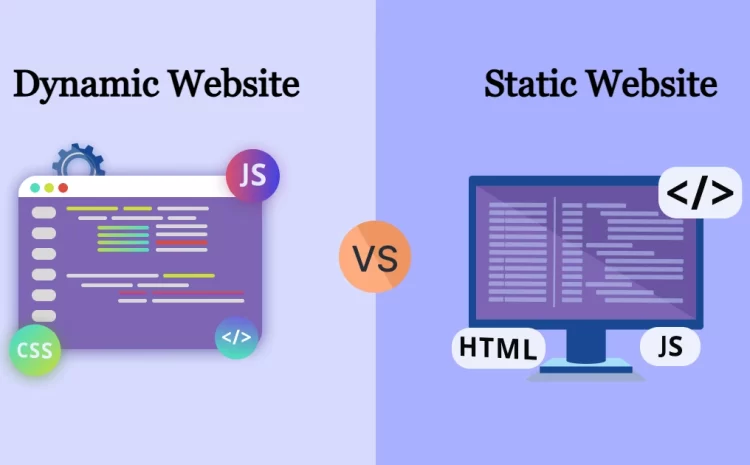





Write a Comment